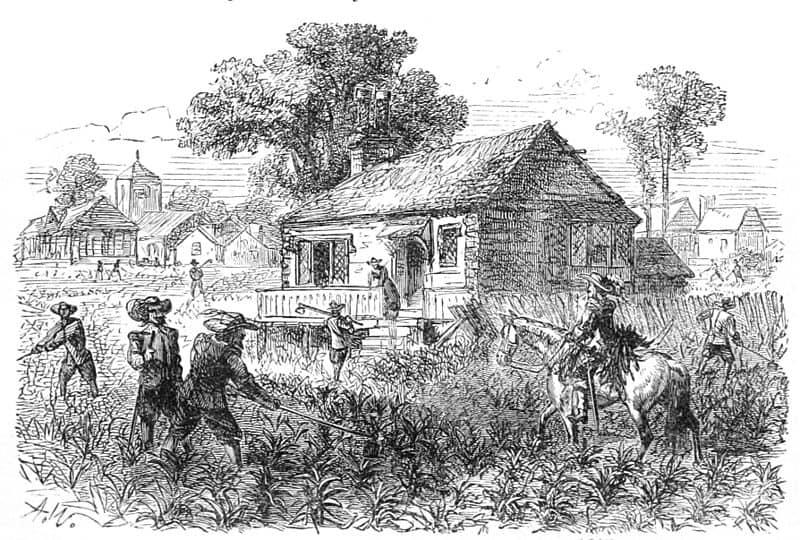
ADVERTISEMENT - CONTINUE READING BELOW
5. The Jamestown Colony and the cultivation of tobacco
In May 1607, colonists from Britain landed in Virginia and established themselves at James Fort, later James Towne, along the James River. They could not have picked a worse time. The region was in the middle of a three-year drought. The natives, though not openly hostile at first, were wary of the new arrivals. It was too late in the year to plant crops, and survival of the few they did plant was rare. Over 80% of the first group of settlers died in the ensuing period, known as the Starving Time. Recent excavations at the site indicated the settlers may have resorted to cannibalism. Relief expeditions did little to alleviate the suffering and the colonists abandoned the settlement in 1610. They returned to the settlement after encountering another relief expedition in the James River.

ADVERTISEMENT - CONTINUE READING BELOW
One of the enduring myths of the Jamestown settlement is the colonists discovered native tobacco and transformed it into a cash crop, saving the colony. In 1610, John Rolfe arrived at the colony, bringing with him tobacco seeds from plants cultivated by shipwreck survivors he encountered in Bermuda. Rolfe was aware of the soaring popularity of tobacco in England. He reasoned that he could harvest tobacco in Virginia and generate a cash crop for the investors in the colony, enriching himself in the process. The Spanish tobacco seeds Rolfe brought from Bermuda produced a sweeter leaf than those of the native Virginia strains. Rolfe harvested his first crop in 1614, having established Varina Farms, the first of the great Virginia tobacco plantations, two years earlier. By 1618 Rolfe was a wealthy man, and Virginia tobacco was the preferred leaf among British consumers.

